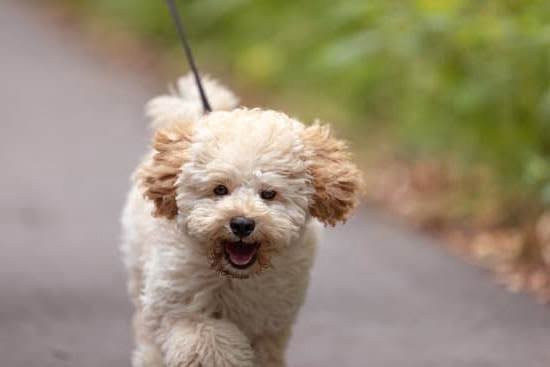What is a dog training dummy, and why are they an essential tool for training your furry friend? Dog training dummies play a crucial role in teaching dogs various skills, such as retrieval and obedience.
In this article, we will delve into the world of dog training dummies, exploring what they are, the different types available, how to use them effectively, and the benefits they offer. Whether you are a seasoned trainer or a novice dog owner, understanding the purpose of dog training dummies is fundamental to your pup’s development.
Dog training dummies are objects designed to simulate game birds or other animals for retrieval training purposes. They come in various shapes, sizes, and materials, each serving a specific function in the training process. Whether you’re looking to enhance your dog’s hunting skills or simply improve their obedience, utilizing these tools can make a significant difference in your furry companion’s development.
In the following sections of this article, we will explore the basics of what a dog training dummy is and discuss the different types available on the market today. Furthermore, we will provide a step-by-step guide on how to use these dummies effectively for training purposes and highlight the benefits they offer for improving your dog’s retrieval skills and overall obedience.
So let’s dive into the world of dog training dummies and discover how incorporating them into your training regimen can lead to remarkable results for you and your canine companion.
The Basics
A dog training dummy is an essential tool for teaching and honing a dog’s retrieval skills. It is a device designed to simulate the size, weight, and texture of real game that a hunting dog would typically retrieve. This aids in training dogs for hunting and other retrieving activities.
The most common types of dog training dummies are bumpers and dummies with scent. Bumpers are usually made of hard plastic or rubber and are used to train the dog to retrieve items such as ducks or birds without causing harm to the animals. On the other hand, dummies with scent are designed to mimic the smell of certain game, which helps the dog in developing their tracking abilities.
When using a dog training dummy, it is important to know that they come in different shapes and sizes depending on the specific purpose of your training. Some are suitable for land retrieving while others are designed for water retrieving. Additionally, their weight can vary depending on the level of difficulty you want your dog to experience during training.
Different Types of Dog Training Dummies
When it comes to dog training dummies, there are various types to choose from, each serving different purposes in the training process. One of the most common types is the bumper dummy, which is typically made of plastic or canvas material and often used for basic retrieval and obedience training. Bumper dummies may come in different shapes and sizes, allowing for versatility in training exercises.
Another type of dog training dummy is one that is designed with scent, commonly used for teaching dogs how to track scents or for hunting training. These dummies are infused with scents such as duck or pheasant to simulate real-life hunting scenarios. The introduction of scent into the training can help prepare dogs for actual hunting or search and rescue operations.
It is important to consider the specific needs of your dog when choosing a type of training dummy. For example, if you have a retriever breed that you plan to train for hunting, a dummy with scent would be more beneficial compared to a standard bumper dummy. Understanding the different types available will allow you to select the most suitable option for your dog’s training regimen.
| Type | Description |
|---|---|
| Bumper Dummy | Commonly made of plastic or canvas material, used for basic retrieval and obedience training. |
| Dummy with Scent | Infused with scents such as duck or pheasant for hunting or tracking training purposes. |
How to Use a Dog Training Dummy
Step 1: Introducing the Dummy
To start using a dog training dummy, it’s important to introduce it to your dog in a positive manner. Allow your dog to inspect the dummy and get used to its shape and texture. Encourage your dog to interact with the dummy by showing excitement and praise when they show interest in it.
Step 2: Teaching the Retrieve
Once your dog is comfortable with the dummy, you can begin teaching them the retrieve command. Start by throwing the dummy just a short distance and encouraging your dog to bring it back to you. Use treats or verbal praise as a reward for successful retrieves. Gradually increase the distance of the throws as your dog becomes more proficient at retrieving the dummy.
Step 3: Adding Distractions
As your dog becomes more skilled at retrieving the training dummy, it’s important to add distractions to simulate real-life hunting or field situations. This can include introducing different scents to the dummy, having your dog retrieve from water, or incorporating other elements such as tall grass or brush. By practicing with distractions, your dog will learn to focus on their task despite external factors.
By following this step-by-step guide for using a dog training dummy, you can effectively improve your dog’s retrieval skills and obedience. Remember to be patient and consistent throughout the training process, and always use positive reinforcement to encourage good behavior.
Benefits of Using Dog Training Dummies
Dog training dummies are essential tools for improving a dog’s retrieval skills and obedience. These training aids provide numerous benefits that can enhance a dog’s overall performance and behavior. Here are some of the key advantages of using dog training dummies:
- Improving Retrieval Skills: Dog training dummies are designed to simulate the size, shape, and texture of real game birds, making them an effective tool for teaching dogs how to retrieve. By consistently practicing with dummies, dogs can develop their retrieving abilities, including marking, memory retrieves, and blind retrieves.
- Enhancing Obedience: Using dog training dummies during obedience training can help reinforce commands such as “sit,” “stay,” “heel,” and “come.” By incorporating these dummies into training sessions, dogs learn to follow instructions more effectively and improve their overall obedience.
- Building Confidence: Dog training dummies can also help build a dog’s confidence in various environments and scenarios. Whether used for hunting or field trials, regular exposure to dummies can familiarize dogs with the tasks they are expected to perform, leading to increased confidence in their abilities.
Incorporating dog training dummies into your training regimen can lead to significant improvements in your dog’s performance while enhancing the bond between you and your pet. From developing essential retrieval skills to reinforcing obedience commands, the benefits of using these training aids are invaluable for both professional trainers and dog owners alike.
Choosing the Right Dog Training Dummy
When it comes to choosing the right dog training dummy, there are several factors to consider in order to ensure that you are selecting the best option for your canine companion. One of the most important considerations is the material of the dummy. Dog training dummies come in various materials such as canvas, plastic, and rubber.
Canvas dummies are lightweight and easy for dogs to carry, while plastic dummies are durable and can float on water, making them ideal for water training. Rubber dummies are softer and more gentle on a dog’s mouth, which is beneficial for younger or more sensitive dogs.
Another factor to take into account is the size and shape of the dog training dummy. The size and shape should mimic that of a real bird or game animal in order to best prepare your dog for hunting and retrieving. It’s important to choose a dummy that closely resembles the objects your dog will be expected to retrieve in real-life scenarios.
Additionally, consider whether you want a standard dummy or one with added features such as scent or extra weight. Scented dummies can be helpful in teaching your dog to use their sense of smell when retrieving objects, while weighted dummies can assist in building strength and endurance in your dog’s retrieval skills.
By carefully considering these factors when choosing a dog training dummy, you can effectively enhance your dog’s training experience and improve their retrieval skills in preparation for real-life hunting or field work.
| Factors to Consider | Description |
|---|---|
| Material | Consider canvas for lightweight, plastic for durability, or rubber for gentleness. |
| Size and Shape | Choose a dummy that resembles real birds or game animals. |
| Added Features | Decide if you need a scented dummy for smell training or a weighted dummy for strength building. |
Common Mistakes to Avoid When Using Dog Training Dummies
When using dog training dummies, it’s important to be aware of the common mistakes that can hinder the effectiveness of the training process. By avoiding these mistakes, you can ensure that your dog develops the proper skills and behaviors necessary for successful retrieval and obedience.
Using Incorrect Scent or Lack Thereof
One common mistake when using dog training dummies is not properly introducing scent or using the wrong type of scent. Whether you’re training for hunting or retrieving purposes, it’s crucial to use dummies with the appropriate scent to simulate real-life scenarios. Additionally, some trainers overlook the importance of introducing scent gradually, leading to confusion for the dog.
Improper Throwing Technique
Another mistake to avoid is improper throwing technique when using dog training dummies. It’s essential to throw the dummy in a way that mimics natural movements, such as those made by birds or other game. Failing to do so can lead to confusion for your dog and may result in improper retrieval behavior.
Skipping Step-by-Step Training Process
Some trainers make the mistake of rushing through the step-by-step training process when using dog training dummies. It’s important to start with basic commands and gradually progress to more advanced techniques. By skipping steps in the training regimen, you risk overwhelming your dog and hindering their overall progress.
By being mindful of these common mistakes and taking steps to avoid them, you can maximize the effectiveness of using dog training dummies in your dog’s training regimen. This will ultimately lead to improved retrieval skills, obedience, and overall performance in various settings.
Conclusion
In conclusion, dog training dummies are an essential tool for any dog owner looking to improve their pet’s retrieval skills and obedience. By understanding the purpose of these dummies and the different types available, you can effectively incorporate them into your training regimen. Whether you choose bumpers, dummies with scent, or other variations, the key is to use them correctly with a step-by-step guide for training purposes.
The benefits of using dog training dummies cannot be overstated. Not only do they help improve retrieval skills, but they also encourage obedience and mental stimulation for your canine companion. By choosing the right dog training dummy and avoiding common mistakes in their usage, you can ensure that your training efforts are successful and enjoyable for both you and your dog.
In summary, incorporating dog training dummies into your training regimen is a valuable investment in your pet’s development. With proper use and consideration of factors such as materials, size, and weight, these dummies can make a significant impact on your dog’s ability to retrieve and follow commands. So if you’re looking to enhance your pet’s skills while strengthening the bond between you, consider adding dog training dummies to your toolkit today.

Welcome to the blog! I am a professional dog trainer and have been working with dogs for many years. In this blog, I will be discussing various topics related to dog training, including tips, tricks, and advice. I hope you find this information helpful and informative. Thanks for reading!





